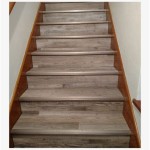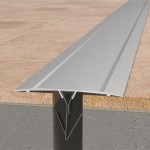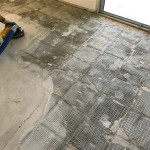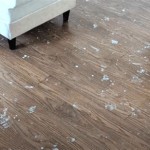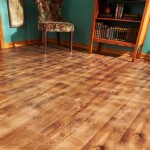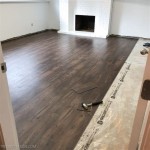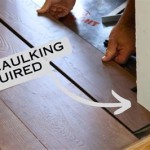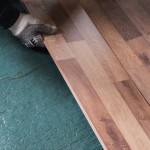Is Laminate Flooring Easy to Remove and Install Over Carpet?
Laminate flooring has grown increasingly popular in recent years, offering a durable and aesthetically pleasing alternative to traditional hardwood flooring. While it is generally considered a relatively easy flooring option to install, the process can be more complex when working over existing carpet. The presence of carpet adds a layer of complexity to the process, requiring careful consideration and planning for both removal and installation. This article delves into the feasibility of removing and installing laminate flooring over carpet, offering a comprehensive overview of the process, its associated challenges, and essential considerations for successful implementation.
Challenges of Installing Laminate Flooring over Carpet
Installing laminate flooring over carpet presents unique challenges that can impact the overall outcome and ease of installation. These challenges include:
- Uneven Subfloor: The presence of carpet often masks unevenness in the subfloor. This unevenness can be amplified when installing laminate flooring, leading to unevenness, clicks, and gaps between planks. Before proceeding with installation, it is crucial to ensure the subfloor is level within a 1/8-inch tolerance for every 10 feet.
- Moisture Barrier: Carpet padding often acts as a moisture barrier, trapping humidity and leading to potential mold growth. This can significantly impact the longevity of the laminate flooring. Proper ventilation and the use of a moisture barrier beneath the laminate flooring are critical for preventing moisture-related issues.
- Carpet Thickness: The thickness of the carpet can impact the height of the laminate flooring and how it interacts with doors and other fixtures. It is essential to consider the total height of the flooring system, including the carpet, padding, and laminate planks, to avoid any clearance issues.
Steps for Removing Carpet Before Installing Laminate Flooring
While installing laminate flooring over carpet is not recommended, some homeowners opt to remove the carpet for a more stable and predictable installation. This process typically involves the following steps:
- Prepare the Room: Clear the room of furniture, fixtures, and other obstructions. Protect the surrounding areas with drop cloths or plastic sheeting to avoid damage.
- Remove Baseboards: Carefully remove the baseboards, using a pry bar and a hammer. Protect the walls with a piece of wood to prevent damage.
- Remove Tack Strips: If the carpet has tack strips along the edges, use a utility knife and a pry bar to remove them carefully.
- Remove Carpet Padding: Remove the carpet padding, either by pulling it up or using a utility knife to cut it into smaller sections.
- Remove Carpet: Carefully lift and roll the carpet away from the room. If the carpet is glued down, you may need to use a carpet removal tool to loosen it from the subfloor.
- Clean the Subfloor: Thoroughly clean the subfloor to remove any remnants of carpet, padding, or adhesive. Sweep, vacuum, and if necessary, use a floor cleaner to ensure a clean surface.
- Inspect and Repair: Inspect the subfloor for any damage, such as cracks, holes, or warping. Repair these issues before proceeding with laminate flooring installation.
- Cost-Effective: Removing existing carpet can be time-consuming and expensive. Installing laminate flooring directly over the carpet can save on labor and material costs.
- Time-Saving: Installing laminate flooring over carpet eliminates the need for subfloor preparation, potentially shortening the overall installation time. However, this can lead to potential issues down the road.
- Less Disruption: This approach minimizes disruption to the home, as it avoids the need to remove furniture and fixtures.
- Uneven Surface: The carpet can create an uneven surface, potentially resulting in uneven flooring, clicks, and gaps between planks.
- Moisture Issues: The carpet padding can trap moisture, leading to potential mold and mildew growth underneath the laminate flooring.
- Reduced Lifespan: Installing laminate flooring over carpet can compromise the lifespan of the laminate flooring, as it will receive less support from the subfloor.
- Limited Durability: The added layer of carpet padding can reduce the overall impact resistance of the laminate flooring.
- Sound Transmission: The carpet padding can absorb sound, leading to a more muffled walking experience. However, it can also amplify sound vibrations from below, potentially making it less soundproof.
Installing Laminate Flooring Over Carpet: Pros and Cons
While installing laminate flooring over existing carpet is generally not recommended, it is possible in some cases. Here are considerations for choosing this approach:
Pros:
Cons:
Ultimately, the decision to install laminate flooring over carpet depends on the specific circumstances, budget, and the desired outcome. Carefully weigh the potential benefits and drawbacks before selecting this option.

Replace Carpet With Laminate Flooring Entire Process And Details

Can You Carpet Over Laminate Find The Truth Here Teka Flooring

How To Remove Carpet And Install Vinyl Flooring Duralux Luxury Plank Lvp Over Concrete

How To Replace Carpet With Laminate Flooring Floor Express

Step By Guide To Remove Carpet And Install Wood Flooring

How To Install Laminate Flooring For Beginners

How To Install Temporary Flooring Over Carpet

How Much Does It Cost To Replace Carpet With Laminate Angi

How To Remove Laminate Flooring In 6 Easy Steps

Our Step By Guide For Laying Laminate Flooring
See Also



